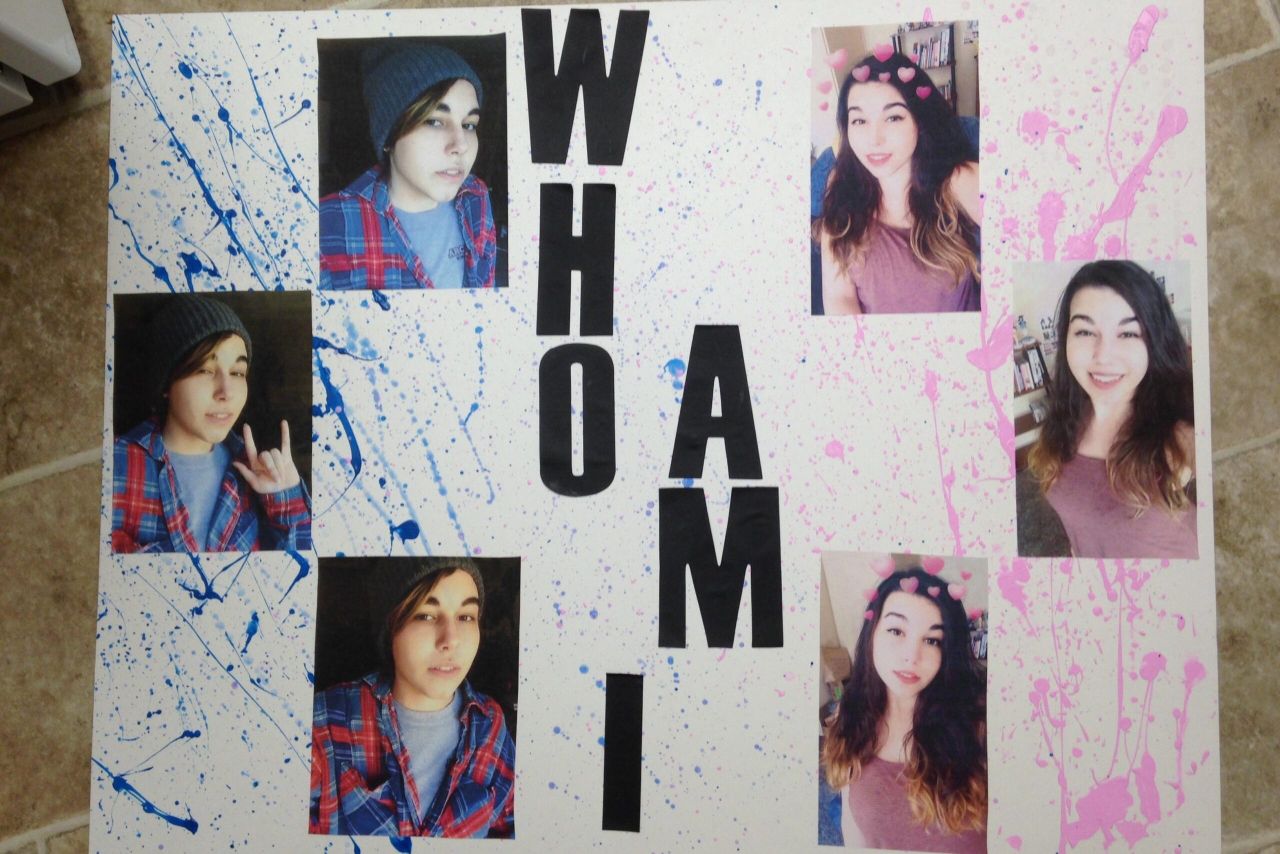Breaking the Gender Binary
What does it mean to perform gender?

My poster for the Becoming Equal: An Ongoing Conversation on Gender Identity Symposium.
One of the most obvious answers that comes to mind is expression through appearance. Our appearances dictate how society sorts us into categories of male or female (and occasionally, androgynous, other, or unknown). At the base level, one might recognize this as the association of being feminine with the color pink in childhood, extremely high beauty standards, and a passive disposition. On the opposite end, masculinity is often tied to the color blue in childhood, less focus on appearance, and an aggressive disposition. But the effects of the gender binary go much deeper than these few examples, and often dictate in negative ways what is expected for behavior in both men and women.
On Oct. 10, the Sociology, Anthropology, and Criminal Justice Department held the Becoming Equal: An Ongoing Conversation on Gender Identity Symposium in the Castle, which my Women and Gender Studies class got to participate in! Our class focuses on breaking the gender binary, which is the classification of gender as two inherently separate and polar opposite categories of behavior. We look into the negative effects that the gender binary has on society, as well as examples of when humanity breaks these strict dichotomies.
In America’s patriarchal society, makeup is inherently tied to femininity, and is often considered as a requirement for women to be viewed as appropriate, professional, and attractive. However, makeup can also be used to enhance masculinity and even give a masculine shape to a feminine face. If one uses makeup to play upon some of the key facial indicators of gender— such as eyebrows, the jawline, eyes, and lips— identity can be read in a totally different way. For my project, I wanted to show how makeup can play with gender and shift how the viewer perceives me. I created a poster with one side filled with selfies of me in traditional feminine makeup, and the other selfies of me presenting masculine. To make myself look masculine, I followed makeup tutorials that are used by “drag kings” (similar to drag queens, in which women personify a male character) to sculpt my face using contouring to look more masculine.
I received a lot of comments about how it didn’t look like I was wearing much makeup at all, but I was actually wearing more than my feminine selfies required! With the masculine selfies, I also changed the composition of the photo by playing with lighting and my body language to appear more stereotypically masculine (I looked at the Instagram posts of my friends who identify as male and followed their example). This isn’t the first time I’ve played with gender and makeup. I first started getting into this practice through cosplay (recreating the outfits of characters in pop culture, comics, video games, etc.) and dressing up as male characters. It’s definitely a little weird to look at yourself in the mirror after your transformation, but it’s interesting to analyze how society largely connects our identities with our appearances, and how gender presentation can be a spectrum. Many of the visitors were surprised that the person in the photos on the left side of the poster, was the same exact person in the photos to the right.
Our class focuses on breaking the gender binary, which is the classification of gender as two inherently separate and polar opposite categories of behavior.
– Caitlin Joyce
Other students had their own interpretations. Fellow Because Arcadia blogger Jess Derr’s project (pictured in header) explored the gender binary in photography, where she photographed male models in positions that are stereotypically feminine, and the opposite with female models presenting in masculine positions. Other projects explored third genders in other cultures— such as hijras or two-spirits— how the gender binary is reflected in advertisement, the price differences between identical children’s toys painted pink or plain, and the variety of gender expression in the student body of Arcadia. It was a lot of fun looking at my fellow classmates projects and discussing what our projects represented to the visitors who walked through. We also watched a TEDTalk given by Nicole Maines, subject of this year’s First-Year Summer Reading selection Becoming Nicole, on being a transgender woman and what the process of changing her gender identity was like. After this, we discussed her talk and how the gender binary has influenced our lives. There’s no bonding activity quite like deconstructing gender norms with your peers!
In addition to presenting with my class, I also did a Snapchat takeover during the event. I love talking to both current and prospective Arcadia students about the interesting activities on campus. Though sometimes it can be daunting to post snaps of myself to a crowd of often 800+ viewers, I like adding my own personal style to my Snapchats, and giving my unique perspective on campus life. Overall, the day was quite a success, and it was fun to come together as a community to do some introspection on how gender influences our identities, society, and beyond.



